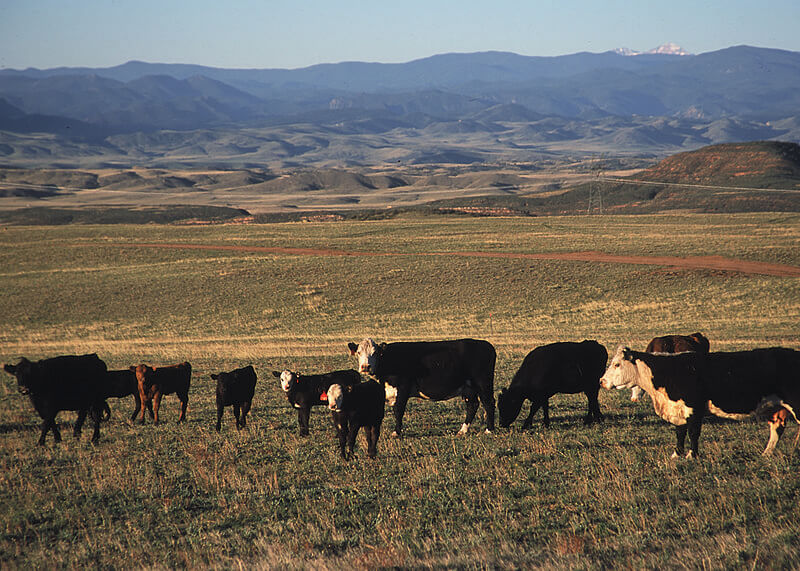You see an example in the below article of what will continue to happen unless people all join as 1 Voice! Ours has the Attorneys as well as the research to begin protecting our Children’s Resources. We need every single follower to join this movement that with your help will become the howl that is heard the world over.
Recently Colorado U.S. Rep. Scott Tipton was quoted during a congressional hearing recommending the government enlist help from ranchers and farmers to better protect federal lands.
For context, due to the efforts of some members of Congress, there is proposed legislation that would open hundreds of thousands of additional acres of federal land to grazing by livestock. Keep in mind that livestock grazing already occurs on over 250 million acres of federal lands–that’s as much acreage as the entire East Coast states combined from Maine to Florida with Missouri thrown in.
“Some of the best custodians for public lands happen to be our ranchers,” Tipton, R- Cortez, said.
Tipton is out to lunch and obviously is not considering the full impacts of livestock production. Consider the following:
Consider these points
Nearly all western ranchers rely on irrigated fields and pastures, hence are the major reason our rivers are dewatered. In Montana, for instance, 95% of the water removed from streams is for livestock hay and other forage crops.
Dewatering of rivers, of course, is one reason 45% of all western fish species are listed or candidates for listing under the ESA. Even in California where most of our veggies, fruit, etc. are grown, the single biggest irrigated crops are hay and pasture.
Nearly all of the dams in the West are primarily for water storage for irrigation. And these dams block migration of fish species like salmon and change water quality so that native fish like humpback chub are negatively impacted.
Livestock transfer disease to wildlife (like bighorn sheep from domestic sheep).
Livestock trample riparian areas-and livestock are the leading factor in the destruction of western riparian areas and wet meadows which are critical habitat for 70-80 percent of all western wildlife.
Fences that are strewed across our public and private lands block wildlife migrations and are responsible for 30% mortality in sage grouse.
Fences also act as lookouts for avian predators on sage-grouse (why do we have fences other than for cows)
Livestock socially displaces native ungulates like elk, which means they are forced into the less suitable habitat to survive.
Cows are the biggest source of non-point pollution in the West. There is not one stream where cattle/sheep are on for any length of time exceed EPA E coli standards, not to mention excess “fertilization” from manure.
Cows/sheep trample soil biocrusts that prevent seedling establishment from exotics like the flammable cheatgrass that is hastening the destruction of our sagebrush steppe habitat through excessive fires.
Cows by disturbing soils also aid invasion by other weedy species from spotted knapweed to medusahead.
Cows consume the bulk of all forage on public lands which means that much less to support native ungulates from elk to grasshoppers. Even in Greater Yellowstone which observably has the greatest concentration of native herbivores, 90% of the forage on public lands in the GYE is allotted to domestic animals in the summer months.
The killing of wolves, grizzlies, etc. are routinely done to appease ranchers. For instance, 38 grizzlies have been “removed” from the Upper Green River allotment in Wyoming since 1995 at the behest of ranchers.
The drainage or destruction of springs to water livestock has led to a huge decline in native snails and amphibians which rely upon these seeps and springs. In many areas, nearly all springs are “captured” for livestock use.
The cropping of grasses reduces hiding cover for many small mammals, birds, reptiles, etc. For instance, grouse tend to do poorly where stubble height is less than 7-10 inches depending on location. And I can attest that finding 10-inch stubble height left after grazing by cows is a rare occurrence.
Did I mention that livestock is among the biggest contributors to greenhouse gas emissions, leading to global warming?
There’s more, but I think you get the point. Show me a rancher in the west whose cows aren’t trampling biocrusts, or eating forage that would support native species or dewatering rivers for irrigation, and I’ll show you a rancher who isn’t in business. There’s no way to operate livestock production in the West without having a significant impact on native ecosystems and wildlife.
Source: Response to Rep. Tipton public lands livestock advocacy | The Wildlife News

